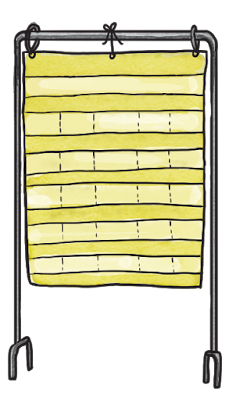My first teaching job was an elementary general music position at 2 schools. One of the schools was toxic and chaotic, the other was friendly and supportive. Both taught me important lessons about the importance of choosing the right teacher friends.
The Timesucker vs. The Reciprocator
RUN FROM: The Timesucker
Timesuckers will constantly ask you to help them with favors small and large. They may ask for time, talent, or skills without anything in return, insist on talking to you during planning or after school when you are trying to get things done, or they may treat elective teachers like teacher assistants. Most of the time, they don't realize how busy a music teacher's day is. Don’t be afraid to guard your time and say no to this person. A simple “no, I am not able to help with that right now” is all you need.
Traits: self-centered, oblivious, talkative (even when you are in a hurry), manipulativeRUN TO: The Reciprocator
Find the reciprocators at your school as soon as you can and then aspire to be a reciprocator yourself. They are often a major reason why a school has a positive, healthy climate. Reciprocators will ask you for favors but will also help you when you need it. The reciprocator respects your time, and when you ask for help, they are happy to lend a hand. Someone that allows you to send children to their room for a break is a tell-tale sign of a reciprocator. We all need a buddy classroom sometimes! Veteran teachers and mentor teachers are often reciprocators because they've been where you are, they are rooting for you, and they see your potential.Traits: kind, giving, loyal, helpful, perceptive, respectful
The Gossip vs. The Out-of-the-Looper
RUN FROM: The Gossip
Gossips will hurt you by spreading rumors or negative stories about you and other teachers. People are drawn to them because they always seem to have the inside scoop. But be warned, hanging around gossips can create a toxic and negative school environment for you. The worst kind of gossip will befriend for the sheer purpose of getting dirt on you and won't think twice about sharing info with admin. They'll stretch the truth to make you look bad. Associate with them with them only when you have to. Stay clear of the teacher’s lounge at lunch if you find the gossips often congregate there.Traits: jealous, selfish, cliquish, competitive, attention-seeking
RUN TO: The Out-of-the-Looper
Out-of-the-loopers make great friends! They aren’t interested in other people's drama and care more about your successes as a teacher. They will be your biggest cheerleader and you will be theirs. They often march to the beat of their own drum, and are sometimes judged by others for being different. Students are their main focus and they don't care much about what others think. You will hear them gush about their students often, and they can be trusted to give you kind and constructive feedback. This person will have your back! At my first school, this person was the art teacher. She was close to retirement and I was a newbie, but we had a magical bond and still do. Out-of-the-loopers can be hard to come by, so treasure them!Traits: humble, caring, giving, quiet in large groups/meetings
With all that being said, in the end, you may never know a person's true colors. Don't judge anyone right off the bat and remain professional with everyone, including support staff. The person that rubbed you the wrong way when you first met, may end up being your best friend.
It can be lonely being the new kid on the block. Make sure you go to lots of professional developments to learn from and connect with other music teachers. Networking is so important as a teacher and you may even be able to ask a seasoned teacher to mentor you. I find that teachers who present at P.D.'s are usually the kind of people who want to help newbies. If you can find a great mentor, you've hit the jackpot!

























